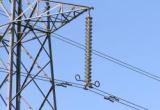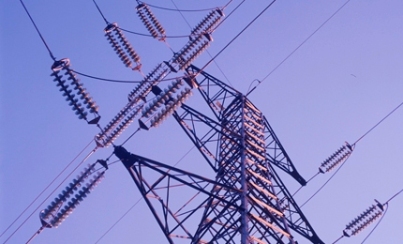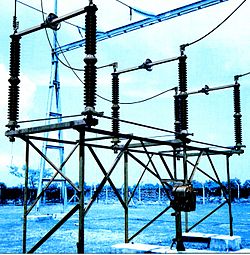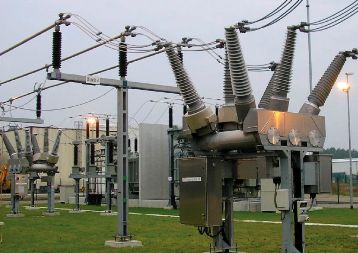Gas as an insulating medium for high voltage equipment
 Gases as an insulating medium are widely used on overhead lines, in switchgear units (RUs) and other electrical equipment. Air, SF6 gas, nitrogen, a mixture of SF6 gas with nitrogen, etc. are used as insulating gases.
Gases as an insulating medium are widely used on overhead lines, in switchgear units (RUs) and other electrical equipment. Air, SF6 gas, nitrogen, a mixture of SF6 gas with nitrogen, etc. are used as insulating gases.
Advantages of gas insulation — it is relatively low cost, relatively high dielectric strength, the property of "self-healing", good thermal conductivity.
Under normal atmospheric conditions (pressure P = 100 kPa, temperature T = 293 K, density γ = 11 g / m3) and in a uniform electric field, the electric strength of air is E = 30 kV / cm.
This value is typical for electrode spacing less than 1 m. At distances of 1-2 m, the strength is about 5 kV / cm, and at a distance of 10 m and more, it is 1.5-2.5 kV / cm. The decrease in the dielectric strength of air at large distances is explained by the streamer theory of the development of the discharge. The dielectric strength value of air is affected by temperature, pressure (density) and humidity.
Electrical equipment is usually designed to work at an altitude of up to 1000 m above sea level at a temperature of t = <40 ° C and γ = 11 g / m3. With an increase in altitude by 100 m and an increase in temperature by 3 ° C, the force of the air decreases by 1%.
A double increase in absolute humidity reduces strength by 6-8%. These data are typical for the distance between live parts up to 1 m. As the distance increases, the influence of atmospheric conditions decreases.

The main disadvantage of air is that ozone and nitrogen oxide are formed under the influence of the corona, which in turn leads to aging of solid insulation and corrosion.
Currently, the following gases are used for the production of gas insulation: SF6 gas, nitrogen, a mixture of SF6 gas with nitrogen and some fluorocarbons. Many of these gases have a higher dielectric strength than air. The downside to many insulations is that they are over 3,200 years old and have a greenhouse potential 22,000 times that of carbon dioxide.
Despite the fact that the share of SF6 gas in the formation of the greenhouse effect is relatively small (about 0.2%), it is included in the list of greenhouse gases due to its wide use in the power industry.

In new high voltage switchgear SF6 gas is used as an insulating and arcing medium (see — SF6 circuit breakers 110 kV and above). The switching capacity and dielectric properties of the switching devices depend on the SF6 gas density, which must be constantly monitored. Leaks through the seals or casing should be automatically detected by the tools.
The normal working pressure (filling pressure at 20 °C) for these switching devices is 0.45 to 0.7 MPa in the minimum temperature range of -40 °C to -25 °C. SF6 gas is non-toxic, non-polluting or moisture, is non-flammable and has no ozone depleting effect. However, it continues to exist in the atmosphere. More information about this insulating gas is written here: Elegas and its properties
A real gas always contains a limited number of charged particles — electrons and ions. Free charge carriers are formed as a result of exposure to natural ionizers — ultraviolet radiation from the sun, cosmic rays, radioactive radiation. Also, free charge carriers are formed under the action of an electric field as a result of ionization.
This process can grow in the form of an avalanche. As a result, the channel between the electrodes acquires high conductivity and a breakdown of the gaseous dielectric occurs. Read more about it here: Types of electric discharges in gases

